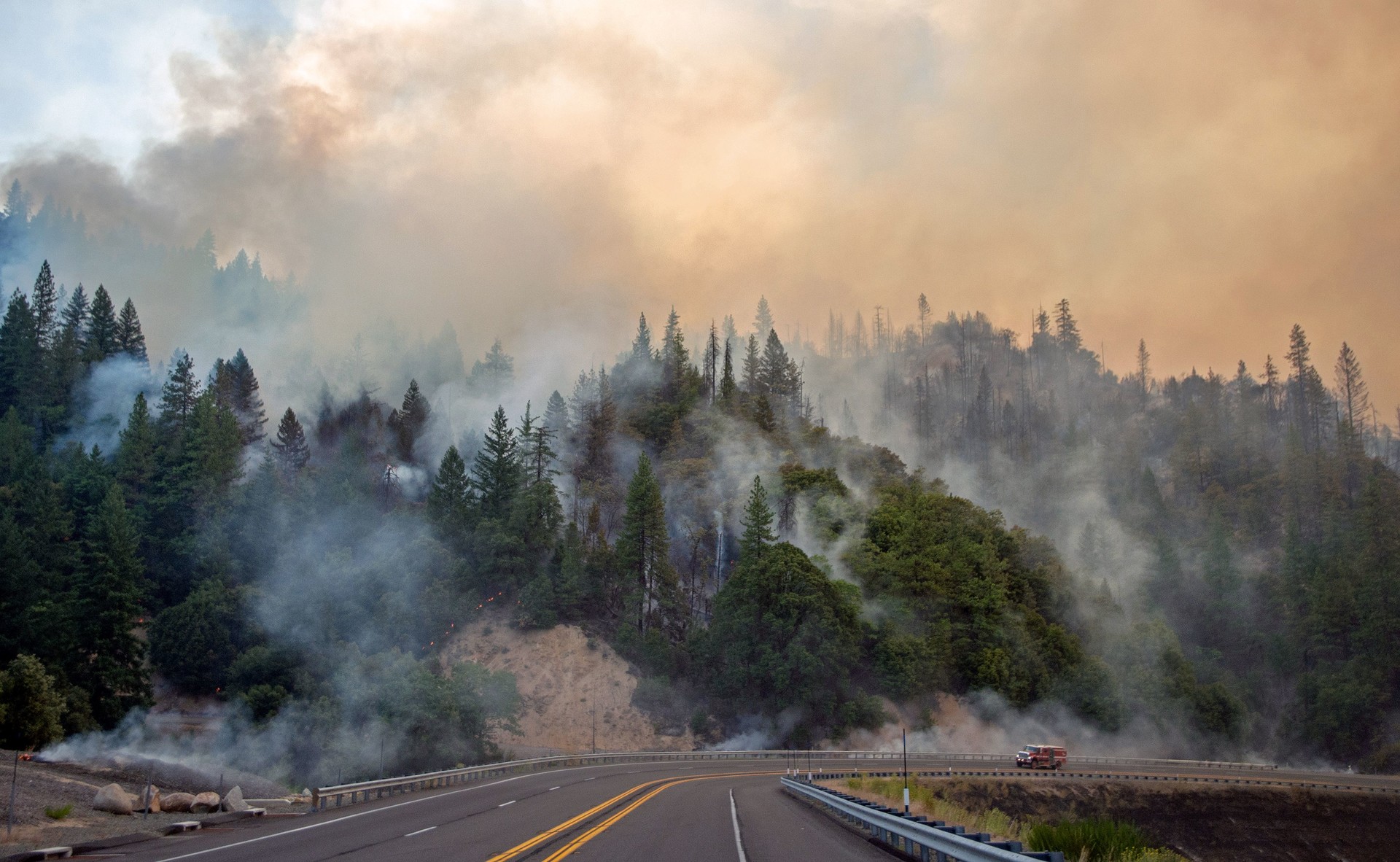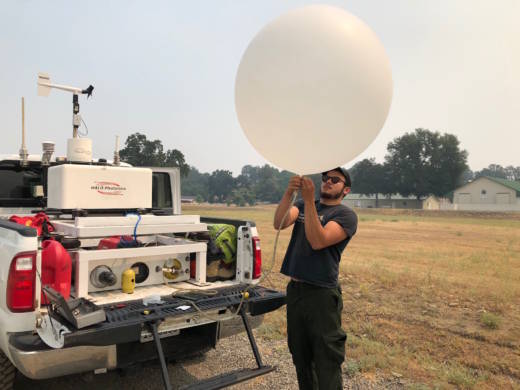One thing that stands out in this already-staggering fire season is the repeated accounts of bizarre fire behavior that seem to defy conventional wisdom.
Now, scientists are looking for new clues to that behavior. It turns out that the smoke plume from a wildfire tells its own complex story that contains some of those clues, and in California, there’s a new breed of “smoke chaser” looking to decode them.

When I arrive at the Carr Fire’s incident command post in Anderson, just south of Redding, Craig Clements had just come out of a briefing with the incident meteorologist. Every big fire has one.
“They’re having issues with the smoke and they want to know how deep it is,” explains Clements. “We’re gonna map the smoke layer.”
Clements runs the Fire Weather Research Lab at San Jose State State University — and he’s taken it on the road. The lab’s mobile unit is a white, heavy-duty pickup, outfitted with a cluster of weather instruments and a LIDAR unit. LIDAR is kind of like radar, but instead of using radio waves, shoots a beam of light skyward, in this case to make a vertical map of the smoke column.

“We can track the smoke,” says Clements, “but we can also measure the wind circulation patterns in the smoke plume.”


